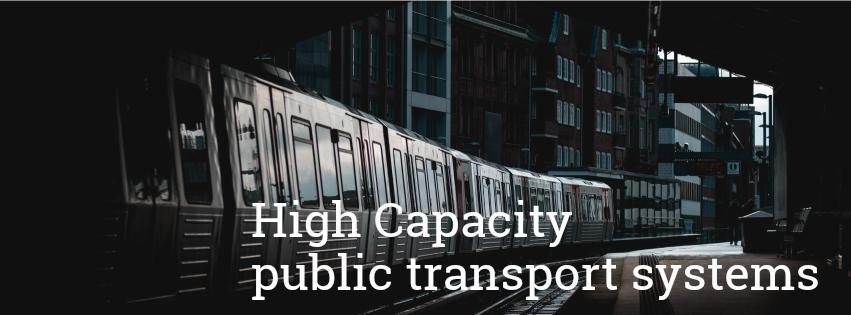High Capacity public transport systems

Railways helped move more goods and more people much faster than before, while we were getting the first megacities. By mid-19th century London, Moscow, and Beijing already had more than 1 million people. Soon many other cities followed: New York, Chicago, Berlin, Vienna. At first, these cities did not span over a large area, but a huge amount of people were stacked in multi-storey apartment buildings. Streets connecting them with offices in the downtown and industrial suburbs felt very crowded. In the 1870s and 1880s, the first electric trams and urban trains started to use the existing railway networks for commuting.
Europe was the centre of these first high capacity public transport networks on the rail. London, Paris, Budapest and Berlin were among the first to implement urban trams and start developing the underground railways for the sole purpose of commuting citizens. These cities could not afford to demolish thousands of houses just to expand the existing streets, so making underground connections was the only viable solution. Buses appeared in the first decades of the 20th century.
Modern high capacity public transport is one of the essential functionalities of every larger city. A properly managed public transport system makes a city more efficient and productive. Such city attracts more business opportunities, creates more jobs and produces less pollution.
Today, cities employ a multitude of public transport means to cope with population growth and road congestion. These means are:
- Tram: the earliest high-capacity mass transit solution, discontinued in many cities, but still in use by others. Tram systems are electric and mostly run on the ground level, often separated from the street traffic. Tramcars can be longer than 30 metres and can transport several hundred people at once.
- Metro: independent urban rail that uses longer trainsets (100 metres or more), usually on the standard gauge. Most metro systems are underground or elevated; smaller portions are ground-level. The metro is very expensive, and many cities cannot afford it or can only build and maintain several lines with basic coverage. A single metro train can welcome more than 1,000 passengers at once.
- Bus: is a high capacity road car that uses diesel, gas, or electric power. Almost all cities in the world have got a bus system since it is cheapest and requires little or no infrastructure investments... Buses, however, can’t solve traffic jams unless everyone is directed to ride them instead of using cars. The capacity is limited, as one bus can board 100-200 passengers.
- Commuter rail. These are trains on a national rail network that only run inside or around major cities and metropolitan areas. Commuter trains have a design similar to metro ones: many doors and wide cabin aisles allow for a quick exchange of passengers.
- Cable cars, funiculars, water and amphibian buses – for cities with complex terrains.
For a long time, the tram, metro rail, urban rail, and bus systems ran independently from each other. Connections were not synchronised, or these synchronisations were sporadic. Centralised management and overlooking the system improved the utilisation. In the 21st century, cities integrate the means of public transport to make commuting more cost-efficient and seamless for citizens. Integrations include synchronised departures, multimodal stations, common billing systems and command centres, making commuting quicker, more convenient and more comfortable for the passenger/citizen.
An adequate high-capacity integrated public transport system makes a city more efficient, cleaner, and less stressful. The need for urban mobility is rising over time, and in the coming years, the importance of public transport will increase.
The high capacity public transport system is one of the core indicators used in ISO 37120 “Sustainable development of communities -- Indicators for city services and quality of life". The indicator “Kilometres of high capacity public transport system per 100 000 population” accordingly to the standard, can provide insight into traffic congestion, transportation system flexibility, and urban form.
Identification and regular updating of the data sources for the indicator calculation are the key questions. City authorities, municipalities do not always have direct access to the data about kilometres of high capacity public transport although municipal transport offices, local and regional transit authorities have such information. The easy way to represent the daily reality is if all responsible sides have common access to one system and can provide the required data.
Smart City Monitor information system for municipalities helps to solve that problem: It can help to see the indicator values in real time based on actual real-time data about transportation activities and events in the city. The system can even aggregate data from multiple sources of data and actual statuses of all transportation routes (including temporarily closed street, resolution of transportation accidents impacting the holistic city transportation performance, etc) route provided the actual (not planned or expected!) accumulated values of the transportation system performance as one of the indicators of quality of life in urban communities
You can easily check how it looks in Smart City Monitor online demo: click on the 'Transporation' and check its report accordingly to the ISO 37120.
(Contributor: Miroslav Milosevic)
2025 © GOLEM IMS GMBH, Austria. ALL Rights Reserved.
Terms of Service |
Privacy Policy
Made in Austria

